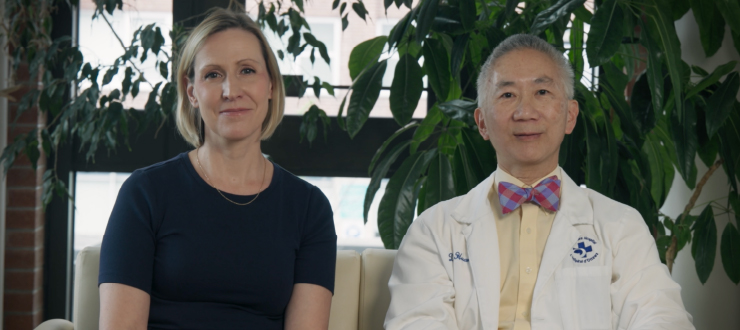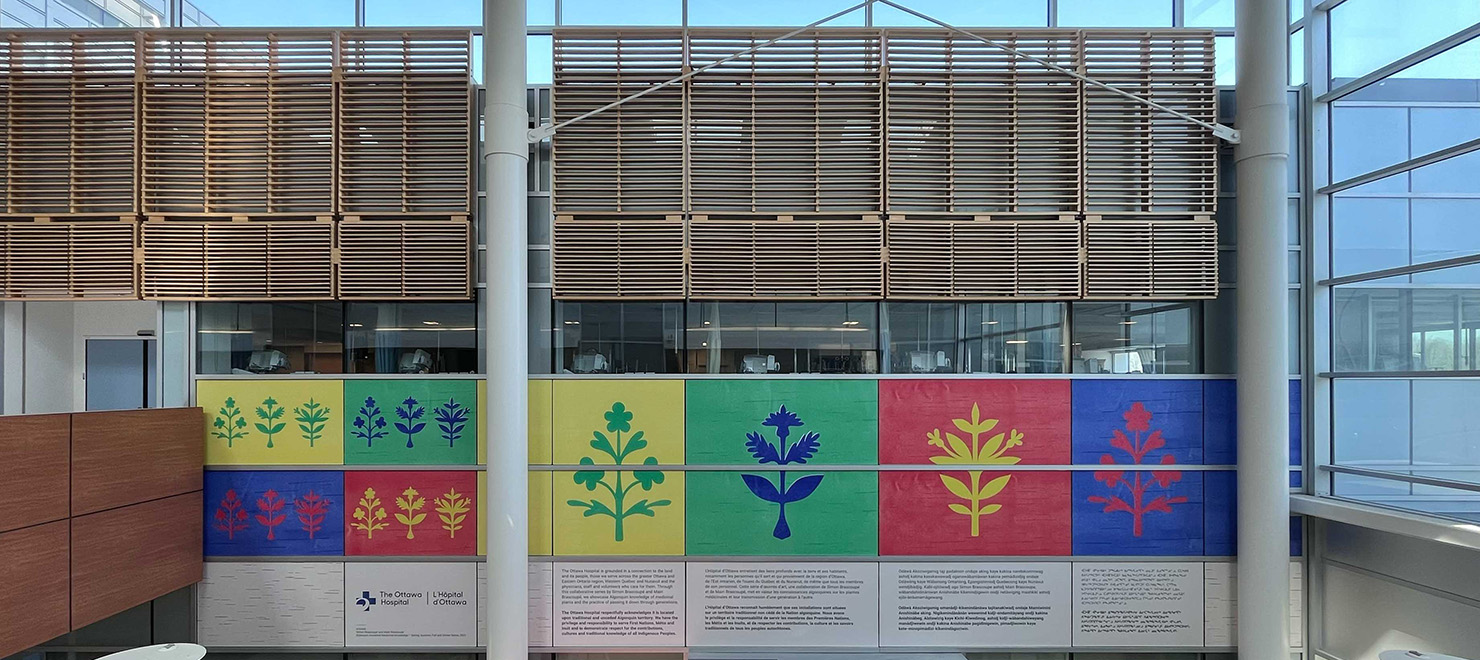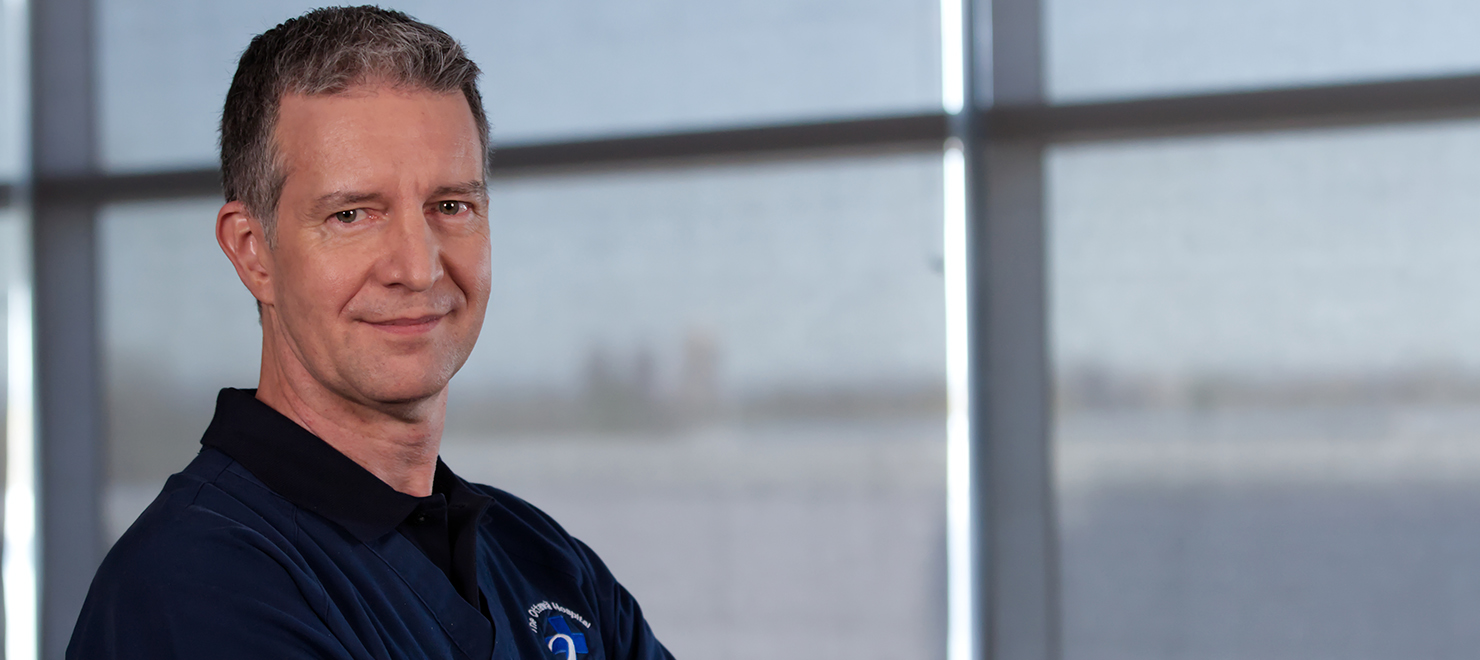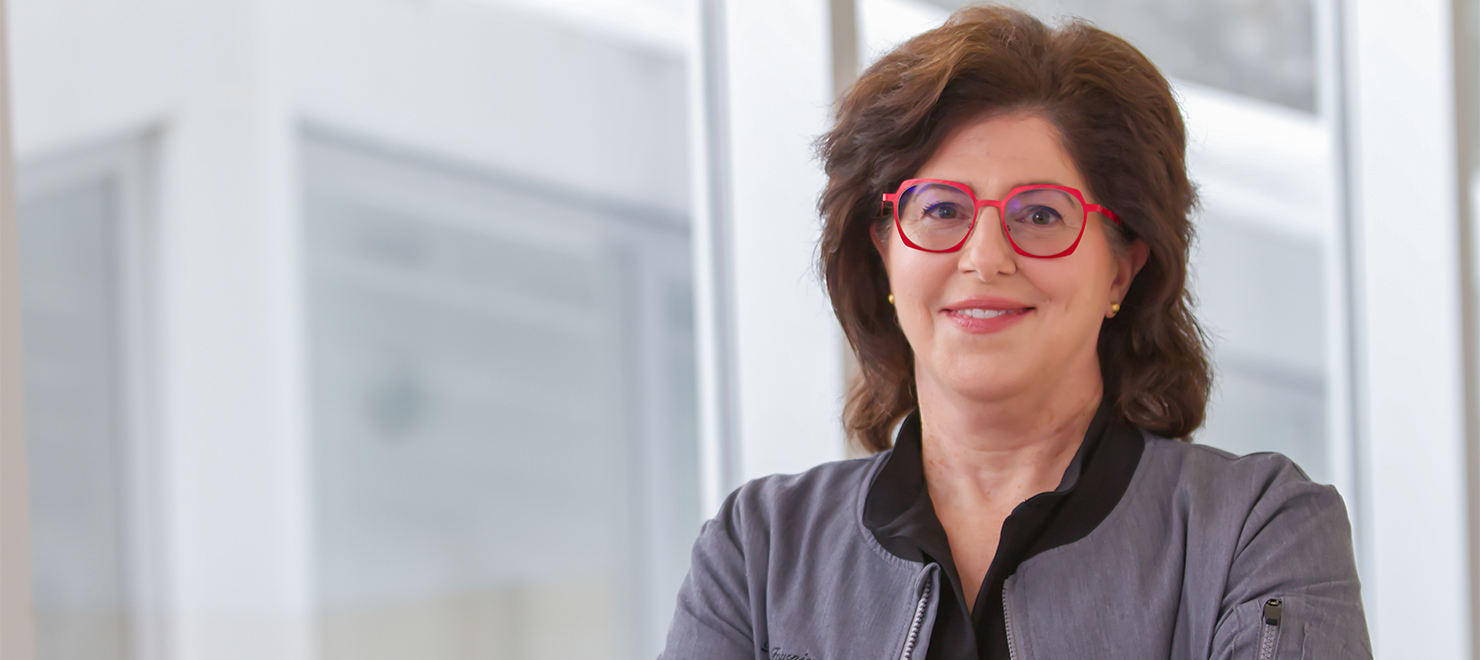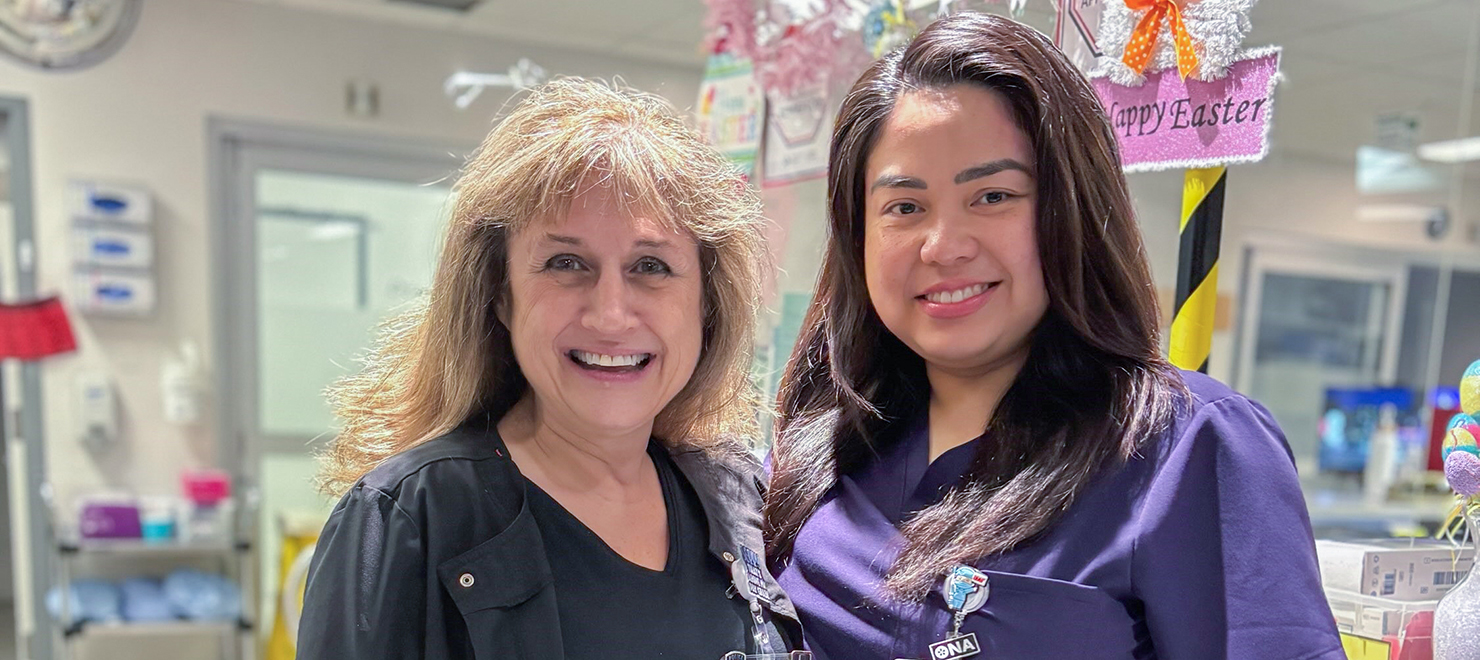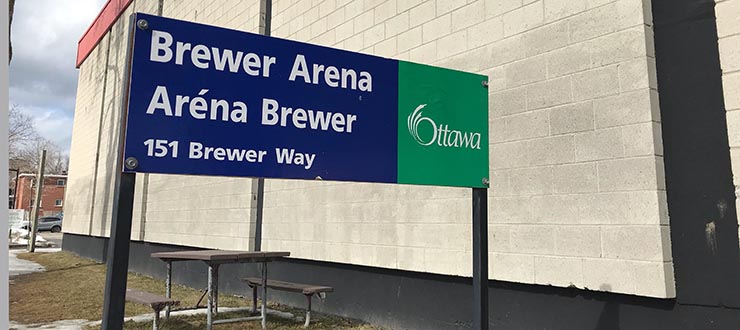
The Brewer Arena went from decommissioned ice rink to COVID-19 testing centre in a matter of days.
The COVID-19 Assessment Centre at Brewer Arena, Ottawa’s first testing centre for COVID-19, marks one year of operation on March 13, 2021. The Brewer Assessment Centre, which eventually set the standard for other testing centres and care clinics in the region, was set up in a matter of days and opened to the public on March 13, 2020, just 48 hours after the first COVID-19 case was confirmed in Ottawa.
The opening of the centre was a significant moment in Ottawa’s response to the COVID-19 pandemic. To mark the momentous day, we spoke with staff from The Ottawa Hospital, Ottawa Public Health and CHEO about what it took to stand up a testing centre in less than a week, and the impact it has had on the community since March 2020.
The lead-up to COVID-19 in Ottawa
COVID-19 entered the public consciousness at the close of 2019, and by early 2020, Ottawa’s medical community had begun preparing for its arrival in the region.
Dr. Andrew Willmore – Medical Director, Department of Emergency Management at The Ottawa Hospital (TOH): We learned early on in the process that something was coming. You know, we watch the news.
Natalie Bruce – Manager, Infection Prevention and Control (IPAC) at The Ottawa Hospital: Right after Christmas, when the World Health Organization was starting to talk about it – for me, that was our get-go. Unfortunately, it takes a burning platform to get the rest of the world [to pay attention], but the IPAC world was already sounding the alarm, quite frankly.
Jason Haug – Supervisor, Social Media and Engagement at Ottawa Public Health (OPH): I remember we started monitoring … what then was just that small, isolated [pocket] in Wuhan and then it grew to Hubei province, and then it grew into Iran and Italy. And you could see it growing into a bigger issue.
Hung Tan – Manager, Emergency Management at The Ottawa Hospital: We entered into enhanced operations on January 29. We were trying to forecast and plan what the overall impact would be to the Hospital, recognizing that it was still an evolving scenario that was happening globally.
Jean-Claude Lemonde – Director, Digital Solutions Operations at The Ottawa Hospital: That morning [of February 27], I was religiously listening to “The Daily” [podcast] from the New York Times… They’d been talking, of course, about the pandemic a few times here and there. But that morning, there was truly a big sense of urgency that was raised. And that really made me change the way that we were going to address it.
Dr. Andrew Willmore: We knew bad things were coming. We knew we needed to test. We knew that this was a disease that was transmissible by droplets, and that public health measures were underway in an attempt to control them, but we really didn’t have line of sight as to what all of this meant.
Natalie Bruce: SARS, Ebola, I’ve been in Saudi Arabia in 2014 to 2015 for MERS, doing assessments of hospitals and IPAC practices. And so yes, I have had a few experiences with pathogens of interest. [COVID-19] stands alone. It’s by far the most stressful, the most concerning. And it is truly my first pandemic, my 20 years in IPAC, nothing like it, nothing compares.
Planning for an assessment centre
The reality of the situation set in when Canada confirmed its first COVID-19 case in Toronto on January 25, 2020. With COVID-19 officially in the country, leadership from across the city came together to begin preparations for Ottawa’s response to the pandemic. The Ottawa Hospital’s Digital Solutions department not only had to plan for the assessment centre, but it also had to prepare for the onslaught of hospital staff suddenly needing to work from home.
Dr. Alan Forster – EVP & Chief Innovation and Quality Officer at The Ottawa Hospital: I had been following the situation closely in Italy as they were the first western country to be hit hard by the pandemic and they had published some of their experiences in the Lancet, a medical journal. There were two particular innovations – one a testing scheme outside of hospitals and two, the use of virtual care to support patients in a variety of settings. The first of these led to the idea of the assessment center. [Former President and CEO of The Ottawa Hospital] Dr. Jack Kitts, [Vice President of Planning and Support Services at The Ottawa Hospital] Joanne Read, and I made a call to Dr. Vera Etches to pitch the idea and it was clear it would be extremely helpful in off-loading the EDs and would provide a much-needed resource to the city’s population. We took the idea to Ontario Health and they were similarly supportive.
Dr. Vera Etches – Medical Officer of Health at OPH: In the early days, [it was] about trying to help the health-care system understand who should be tested, and interpreting the ever-changing guidelines about who should be tested … We were in a conversation with the emergency room physicians a lot as they saw patients, and then trying to determine eligibility for testing. There were all kinds of situations where it would make sense probably to do a test, but we had to balance with the provincial direction. And so, clearly in our conversations with emergency room physicians, [the emergency department] was not the best place for healthy people to come, who didn’t need to be in hospital but who were potentially coming in with COVID-19. And so we were very interested from early on to provide other points of access.
Cameron Love – President and CEO of The Ottawa Hospital: It was the first thing that was identified: that we didn’t have testing infrastructure in the community. It was absolutely mission critical to support the response to the pandemic and it needed to get up and running very, very quickly.
Jean-Claude Lemonde: We needed to make sure that we had [equipment] stocks and plans to deploy them. We had some of that prepared but then we really switched it in gear and really maximized the preparation. Headsets, something as simple as that, we said, ‘Okay, if a lot of people will be working from home, a lot of people will likely request headsets,’ so we ordered a bunch of headsets in the weeks before the world actually switched gear into that. So basically, we had a lot of stock of laptops, of headsets, of network equipment to extend our network to an external clinic, of computers, computers on wheels, and printers, label printers and all that. That all started on February 27. Because we said, “the hospital will fail big time if our team is not ready.”
Cameron Love: The assessment centre is the first perfect example of how a community responds to do something very quickly. The City of Ottawa agreed just to give up an arena and set up all the infrastructure, deal with everything on the facilities side. Two hospitals, The Ottawa Hospital and CHEO, responded exceptionally quickly to find staff and put staff in place, work their processes and get an actual testing centre set up. The Ottawa Paramedic Service was involved very closely in helping to either staff or provide insight into how we provide support to people who need to be transported from the assessment centre to hospital. Ottawa Police Service was involved in terms of providing general security and management.
Dr. Alan Forster: While it was sad to see the experiences of the people and our healthcare colleagues in Italy, their learnings did help us get a jump start on managing the situation. I am certain it was the quick responsiveness of our team that led to our ability to prevent their severe situation from recurring here.
Ottawa’s first COVID-19 case
The first COVID-19 case in Ottawa was confirmed on March 11, 2020, after a patient visited Emergency Department at the General Campus of The Ottawa Hospital.
Natalie Bruce: It was not as dramatic as one would think because of all the pre-planning.
Katie Bourada – Supervisor, Media Relations at OPH: I remember that day. I received a text message and all it said was, “Today’s the day,” and I knew exactly what that meant.
Jean-Claude Lemonde: I was literally shopping for toilet paper.
Natalie Bruce: I don’t remember who called me… but I do remember the dialogue with our team. We really had done a lot of planning before that. Although everyone was obviously anxious, that pre-planning put us in good standing, and so that fear, I don’t think was as great in the anticipation of that first case.
Julie Turcotte, RN – Public Health Communications Nurse at OPH: I recall starting to feel like this is shaping up to be something a bit bigger than what I thought it was, and feeling kind of that naive vulnerability, where you could just tell that the pulse and the pace of the work was really, really rapidly evolving.
Courtney Argue, RN – IPAC Nurse and Joint Health and Safety Co-Chair at The Ottawa Hospital, Civic Campus: When I heard about the first case, it really made me pause. It kind of reminded me of a movie where you’re the main character that finally gets to the top of the mountain and you face that enemy, and that moment where they look into each other’s eyes, you get all that dramatic music. But at the end of the day, this wasn’t a movie—it was real life. It was a life-or-death experience for many people, and it was really humbling to think, “Okay. It’s here. Now what?”
Assessment centre set-up
The arrival of COVID-19 in Ottawa meant the set-up of the Brewer Assessment Centre was the top priority. The assessment centre team was given just 48 hours to open the doors.
Dr. Ken Farion – Corporate Medical Director, Quality, Strategy and Improvement at CHEO: I recall being approached by Dr. Willmore, who said, “Hey, we’re doing this and we’d really like CHEO to be involved. Can we collaborate?” He really painted the picture of what was going to happen at the arena, and what they were doing to prepare, and it was just mind blowing, to think that we were going to do this. I immediately started thinking about how we were going to attract patients, provide child and family-centred care in such scary times, how we were going to leverage Epic, pull people together, thinking through the processes and really trying to understand what this was going to look like, having no concept of what the demand would be.
John Trickett, RN – Director, Community Based Testing at The Ottawa Hospital: It was Wednesday afternoon, I believe it was March 11, and I had a phone call. And basically, the message was, “We’d like you to lean in and help set up an assessment centre.” And I said, “What’s that?” And the answer was, “We’re going to be testing people for COVID-19 and assessing them at the same time.” And I said, “Well, that sounds interesting. That COVID-19 thing is a bit of a problem here. What are we doing?” “Well, we’ve got an ice rink that’s getting the ice taken off it, and you need to get your first patient in the door by noon on Friday,” and this was Wednesday afternoon. And so that was one of those gulp moments. But the team pulled it off, and took great pride in their success.
Jason Haug: The initial focus was really on Brewer, having a centralized site available for Ottawa residents and establishing who would be able to get tested. It was during a time when we still had people returning from travel, so there were questions about how the virus spreads. We were still figuring out how long the incubation period was. It was an interesting time in Ottawa for sure.
Julie Turcotte: I just think of how nimble we had to be. We were essentially walking around the office with laptops and sitting on the ground in each other’s cubicles, trying to just get out as much information and be as transparent as possible through all the channels that we had. When testing came on the scene, there was an incredible need to get that information out clearly and efficiently to all those in Ottawa.
Dr. Andrew Willmore: Honestly, we worked at a breakneck speed. Hundreds of people were working literally around the clock. Our IT group went in and was there for 24 hours a day in order to set up the assessment centre. They pulled in lines, established connectivity, and organized what our response would look like.
Jean-Claude Lemonde: The network team was working with the City to set up the network connection. My team was responsible for setting up the computers, working with the EPIC [electronic medical record system] team to set up the clinic and preparing the equipment in advance, so it was ready to deploy. The physical equipment needed to be set up, but the assessment centre needed to be set up virtually also.
Dr. Alan Forster: Given our investment in Epic, it made sense that we would use this infrastructure to support not only the assessment centers but clinical care outside of the hospital. The team was incredibly nimble in helping us move forward in a large number of clinical areas. This helped us provide care but also has been a source of data which we have used to ensure situational awareness throughout the pandemic.
Cameron Love: Five or six agencies were all working together. If you had done this under normal times and tried to plan this, I would bet it would take well over a year. The assessment centre was literally planned and opened in days. Within a couple of weeks, staff were doing swabs for five, six, seven, 800 people a day. It was a real example of how well this industry in this community can respond to something that is absolutely mission critical, that no one disputes, and no one’s worried about who’s going to take credit.
Dr. Alan Forster: It was so amazing to see how the teams could move from an idea in a medical journal to a fully functioning assessment center in a matter of days.
The challenges
Despite the months and years of planning for a pandemic, challenges still arose. For many of staff at the Brewer Assessment Centre, challenges included infrastructure, supply management, personnel and public health. For others, the challenges were much more personal.
Dr. Andrew Willmore: We had major infrastructural barriers to setting up. We had to pull in wires and set up a hockey arena to be able to have our electronic medical system, to be part of the unit. We had to develop the reporting strategy for public health for all the swabs that we did. We had to establish a governance model around processing those results, who was reading them and reporting them and who was talking to patients.
John Trickett: I remember standing on the concrete that was still wet from where the ice had been melted and thinking about how to flow people through that environment because that was the question of the day. At the same time, I knew that in the next 12 hours we had to install the electrical and Digital Solutions infrastructure. At that point we didn’t know where to put it all. We had it. But we didn’t know where to put it.
Jean-Claude Lemonde: Fortunately, there were two people in our Digital Solutions team that had pickup trucks, because didn’t even have the time to rent a big truck to bring the equipment in.
Courtney Argue: I didn’t know anything about Brewer until March 12. I was working in the Emergency Department that day at the Civic, and [my manager] approached me asking me if I wanted to go tomorrow to this new assessment centre that was created to test people for COVID-19. And I remember to this day, it was a big decision for me, because I was living with my mom at the time. And she had a history of being in and out of the hospital for the last eight months… And she was waiting for a major surgery, which made her really vulnerable to the illness. And it was really important to keep her healthy in this time. So… I have these separate home factors, but I was also thinking about my Health and Safety background, and how it might be a good place for me to work beside my co-workers and create a place that’s safe for us as workers while offering an essential service for the community. There’s really that battle, that internal battle, like, “What do I do?” In the end, I did decide to work.
Opening day of the Brewer Assessment Centre
The Brewer Assessment Centre officially opened at noon on Friday, March 13. Before patients arrived, public officials and media were invited to tour the facility.
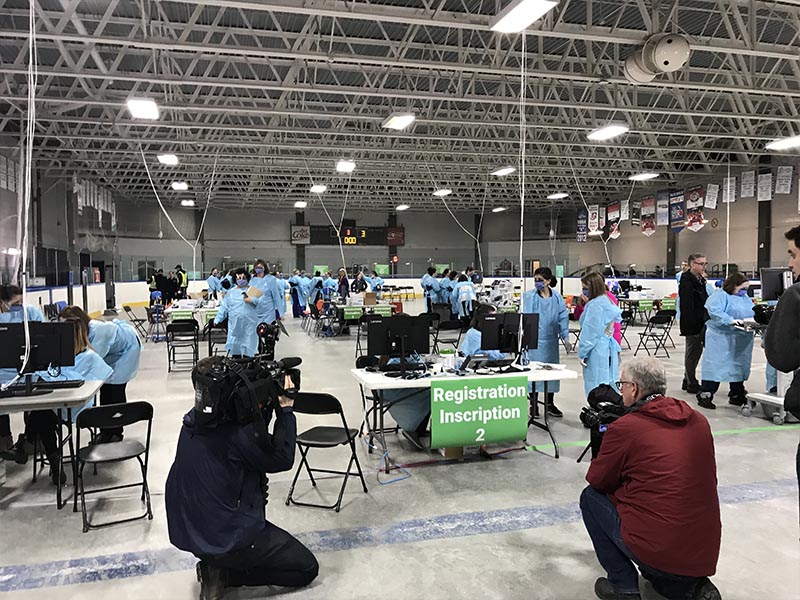
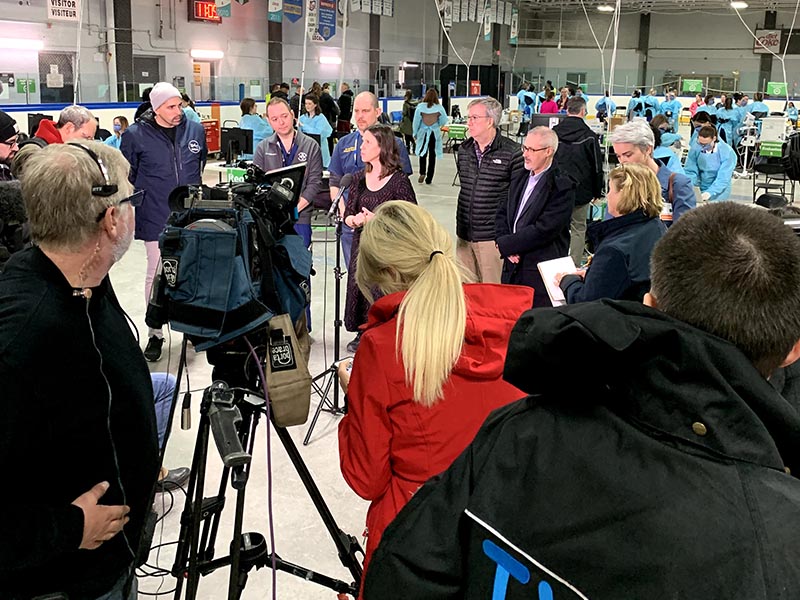
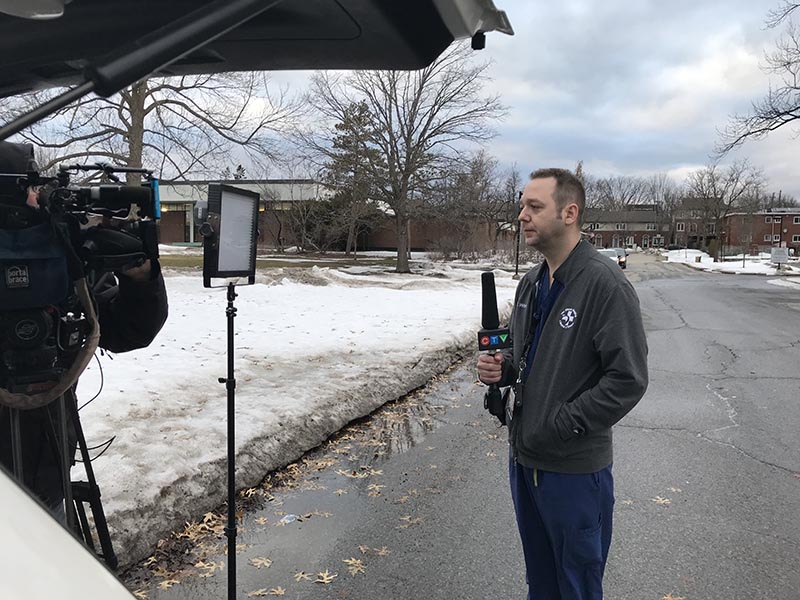
Courtney Argue: It was a Friday the 13th, of course, because it’s COVID-19.
Natalie Bruce: I remember so clearly that the mayor was in, and the Medical Officer of Health and the media. And I thought, ‘I’m not even worried.’ I just know everything is going to go well. And it was, right from the get-go.
Dr. Vera Etches: I remember there was somebody with this massive drill sawing through a wall that needed to be moved so that you could have the proper flow of people in one direction. Infection prevention and control was so important and top of mind. I just remember thinking how confident I was that this would be a safe place for people to come. A proper, professional approach was happening so quickly. I remember that sense of being impressed and thankful.
Katie Bourada: I remember thinking, ‘This is incredible, how quickly this was all put together.’ It was so nice to see all the work and all the partnerships really coming together. Everyone had the same goal in mind It didn’t matter if you worked at OPH, The Ottawa Hospital or the City of Ottawa. Everyone was rallying together to get what needed to get done.”
Joselyn Banks, RN – Nurse Manager (retired) from The Ottawa Hospital and Site Co-Lead at Brewer Assessment Centre: I actually showed up at 12:45 p.m. And they had opened at noon. And I got a call to come and help. When I arrived at 12:45 p.m., I knew absolutely nothing. I just walked in, saw John [Trickett] and asked, “Are we doing N95 masks, or just regular PPE?” and he said, ‘No N95s for now. Get yourself dressed, go to the front door, start helping with some screening and we’ll take it from there.’ I remember when I drove and parked, there was about 200 people in the lineup when I walked by to go into the assessment centre and they’d started screening patients.
John Trickett: For the most part, there was pride. A lot of people put an enormous energy into the build over a short period of time. To see that come to fruition, to watch that [first] patient be tested successfully the sample go off to the lab and the requisition be put into our new system, Epic, that was very rewarding. I was proud to watch officials interact directly with the media and respond to their questions. I knew how much the team had done in the last 48 hours to lead the city of Ottawa down the path of success for assessment and testing of potential COVID-19 patients. I knew that, as an organization, we were leading the way… that was a point of enormous pride.
Dr. Ken Farion: The end of the first day became the start of a busy evening for me. I left Brewer and went back to my office at CHEO for many more hours to refine processes and documents and all the things that we had come up with that day that weren’t quite right yet. I looked at how we were going to fix them and what needed to be fixed first. I wrote lists and sent emails and recruited people. And I finally said, “Okay, I got to go home and get some sleep, because I’m going back tomorrow morning, and then we’re into day two.” That was the start of a year of continuous improvement that drove us to make things better every single day.
The early days
March 13 was the culmination of months of planning and days of set-up, but when the doors to the assessment centre finally opened and the patients began to flow into the former hockey arena, the toughest work began.
Hung Tan: But then, naturally, the happiness and joy flip to how do we sustain this? How do we grow this? What are the next steps in terms of our planning assumptions?
John Trickett: We spent a lot of time at the end of each day reflecting on what worked, what didn’t and what we’re going to do the next day. Dr. Ken Farion was quite persistent at his midnight changes to our standard operating procedure, which we would then convey to everybody at eight o’clock every morning. one way of improving our process was to ensure there was consistency and messaging.
Rosemary Bickerton: In those first few days, the level of anxiety in the public, within ourselves, within our families, within our staff, was just so, so high. This was so new to us. We were here running this assessment centre, here being leaders, trying to keep calm and trying to instill safety measures for all our staff to keep them safe. Of course, we were focused on using the right PPE and using it properly. We were focused on the public and managing lineups. A lot of the patients we saw in March were very sick, And one of the things that we found very hard to do was to turn some of these people away and say, “No, I’m sorry, you cannot be tested because you don’t meet criteria.”
John Trickett: It took several weeks, or potentially a month or two, before the team started to gel because there were new players every day.
Joselyn Banks: I remember in the very first weekend when we first opened, [Rosemary] going around with her clipboard to find out who’s here, who needs to get paid, how many hours were you here and she would handwrite on the clipboard. We had no flow sheets for staff … [Rosemary was] trying to find out which leaders at the front could come back the next day and [she would] jot it down with her pen and her clipboard.
The impact of the assessment centre
The Brewer Assessment Centre became the prototype for other assessment centres and care clinics around the region. In time, it also acted as a deployment hub for staff who were tasked with testing in long-term care homes and mobile clinics.
Dr. Vera Etches: It was a place people looked to for good practices and ongoing learning. The Brewer centre stands out to me in that it continuously got more and more efficient. And, in public health, in our role as a communications lead and interface with the public, we often got a lot of feedback from clients who are using testing centres and knowing… the Brewer team always looked at how they could take that feedback and continue to improve. I think it set a model also in terms of adaptability to the ever-changing situation.
Dr. Ken Farion: It did become a foundational hub of testing activity and really activity around a lot of other aspects. It’s not just about testing anymore. It’s about how we’ve expanded testing to long term care, it’s about how we’ve shared our knowledge to other organizations outside of our immediate catchment in Ottawa, across the region and across the province. We’ve been seen as leaders in so many different facets of what we’ve done. And it all comes back to what we started with at Brewer.
Rosemary Bickerton: Long-term care suffered so much at the beginning and actually all through the pandemic, our elders and our personal support workers that work in these areas. So we were tasked with deploying mobile teams of nurses, swabbers and leaders. We would ask them to go to two or three long-term care homes today and swab 600 or 700 patients, and staff.
The silver linings
The pandemic caused immeasurable pain, loss and suffering to many, but in the face of constant change and challenge, the Brewer Assessment Centre team still managed to find positives in the everyday successes.
Natalie Bruce: It’s hard to express how amazing the teamwork was. To be part of that was really one of the highlights of my career, to see something actually develop so quickly and still have relationships with some of the people from the very beginning.
Hung Tan: I’ve been privileged to work with a fantastic team, a fantastic group of leaders and individuals from across our own organization and people across the community at large. I’ve seen remarkable things that some very talented folks have been able to pull together.
John Trickett: We had small successes, and we celebrated when things went well. We’d look at the count for the day, or we’d look at the number of complaints we didn’t have. We’d look at the smiles on the staffs’ faces when they enjoyed food that a local organization donated these moments gave all of us a small moment of glee and success, because we knew we had done something right.
Rosemary Bickerton: You know, we still had laughs and we still could share moments and boy, we’re tight. It’s like we’re really best friends and even though some of us hadn’t worked together before, we are a close-knit group now and I can say for myself… that we are all new best friends, and that we have a very special bond together.
Dr. Andrew Willmore: I guess I’ll just finish by saying, this has been an incredible privilege. I’ve had the distinct privilege of opening the first assessment centre. I’ve had the privilege of seeing it through to the vaccination deployment strategy for the hospital … COVID-19, as challenging as it is, sort of demonstrated that we can step up, we can look at new threats, and in doing so, we can keep everybody safe. And the folks that I’m working with are amazing. The partners that we have with the City of Ottawa, Ottawa Public Health, the staff at CHEO… it’s just wonderful to be in this mix. A real privilege.
The Brewer Assessment Centre has been a foundation for the pandemic response in Ottawa, and it could not have been achieved without the tireless work of all regional partners. We will continue to work together to vaccinate our region as we move through the next phase of the COVID-19 pandemic.
For more information on The Ottawa Hospital’s COVID-19 response, visit the COVID-19 Timeline: A year in review.
To hear to more of the interviews included in this story, listen to the “Opening the COVID-19 Brewer Assessment Centre” episodes of On Call: The Ottawa Hospital Podcast.

Support patient care and research at
The Ottawa Hospital
You might also like…
Aging well: Guidance for older adults
In this special video series for both older adults and their loved ones, geriatric care specialists from The Ottawa Hospital offer guidance on navigating common health-care challenges that may arise with aging.
A guide to services at The Ottawa Hospital for Indigenous patients and families
At The Ottawa Hospital, we are committed to providing culturally safe care for First Nation, Inuit and Métis patients and families. We are working with Indigenous partners to identify ways we can make your time in hospital more welcoming. Here are some of the ways we’re doing that now.
How to stay safe around water this summer
Drowning can happen to anyone — even strong swimmers. Emergency physician Dr. Christian Vaillancourt debunks common myths about drowning, explains how to act quickly to save a life, and shares what you can do to keep yourself and your loved ones safe around water.
What’s the difference between an optician, optometrist, orthoptist and ophthalmologist?
“Do I need to see an optician, optometrist, orthoptist or ophthalmologist?” We asked Ophthalmologist Dr. Annick Fournier to break down each role so you will know who to consult for your specific eye care needs.
Novice nurses and their mentors learn and grow together
Discover how mentorships at The Ottawa Hospital facilitate a smoother transition into practice for novice nurses, allow experienced nurses to hone their leadership skills, and play a crucial role in retaining nurses from both generations.
Understanding rabies: Risks, vaccination and what to do after a bite
Although rare in Canada, rabies is almost always fatal once symptoms appear. Infectious diseases expert Dr. Michaeline McGuinty shares how rabies is spread, when to get vaccinated and what to do after a bite.


 To reset, hold the Ctrl key, then press 0.
To reset, hold the Ctrl key, then press 0.
